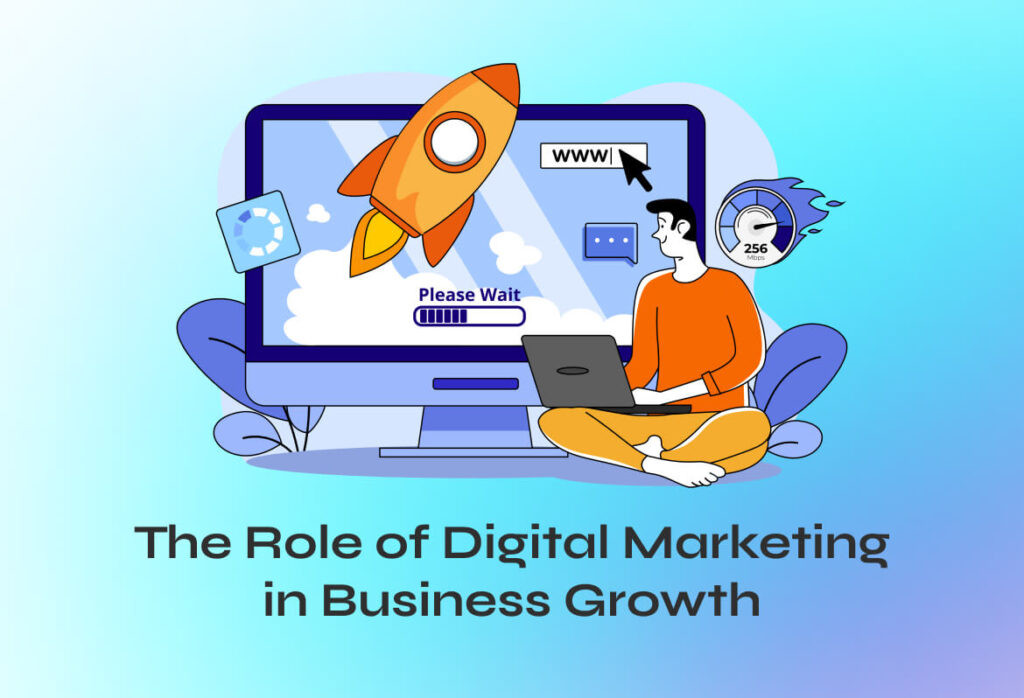Heading into web development, or aiming to brush up your skills? It’s crucial to stay current with the evolving web technologies. This article is your comprehensive guide, taking you from the foundational HTML and CSS to the innovative Progressive Web Apps. It’s more than just a list; it’s about grasping the significance of these technologies in shaping the internet and their potential for the future. Whether you’re starting out or a seasoned pro, understanding these key technologies is vital. So, let’s begin this journey together, equipped with the knowledge to face today’s web development challenges head-on.
1. HTML/CSS
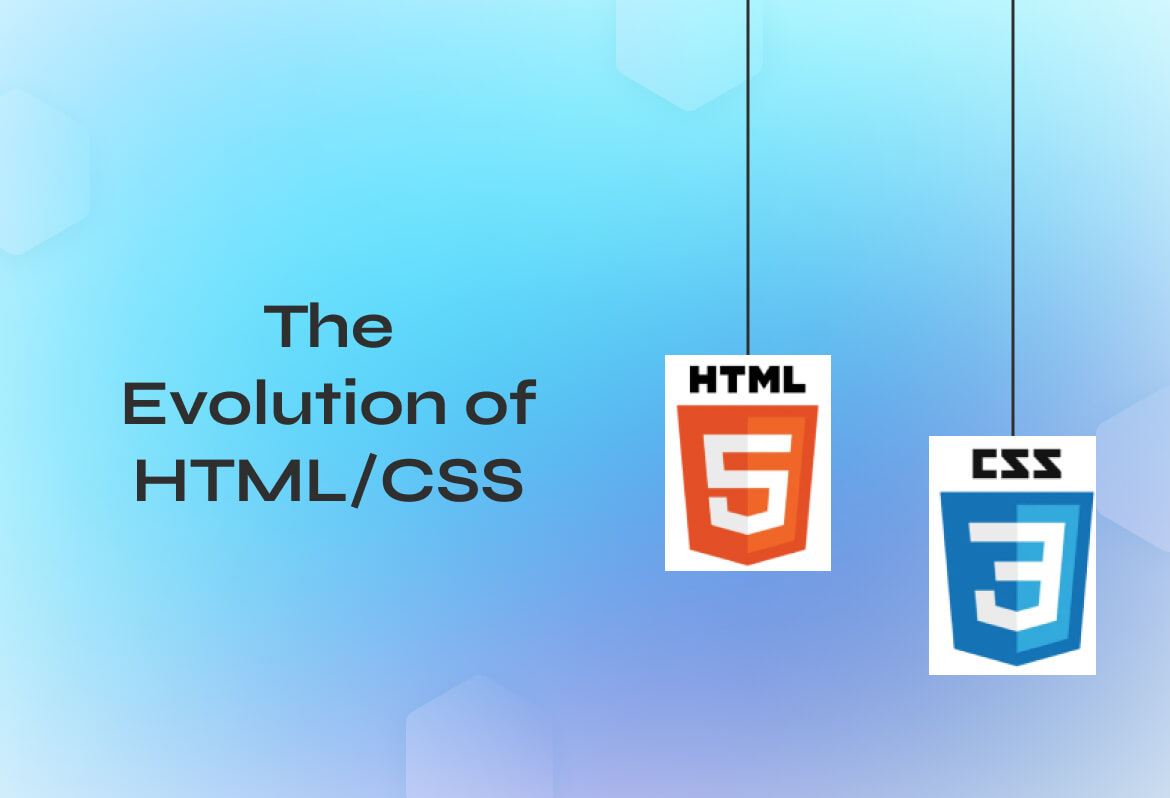
At the heart of every website lies a combination so fundamental yet so powerful: HTML (HyperText Markup Language) and CSS (Cascading Style Sheets). HTML provides the basic structure of sites, which is enhanced and modified by CSS to create visually engaging webpages. It’s impossible to talk about web development without starting here, as these languages form the skeleton of the web.
The Evolution of HTML/CSS
The evolution of HTML5 and CSS3 has brought about a revolution in web development. HTML5 introduced more descriptive elements like <header>, <footer>, <article>, and <section> making the structure of webpages more semantic. The addition of multimedia elements like <video> and <audio> tags has allowed developers to embed media content directly into webpages without needing third-party software.
CSS3, on the other hand, brought in a plethora of styling options, including gradients, shadows, transitions, animations, and a flexible box layout module known as Flexbox. These advancements have given web developers the tools to create more responsive, dynamic, and visually appealing websites than ever before.
Importance in Modern Web Development
Understanding HTML and CSS is essential for any web developer, not just because they are the building blocks of the web but also because they serve as the foundation upon which all other web technologies build. A solid grasp of HTML and CSS is crucial for frontend development, email template design, and even for backend developers to understand how their server-side code will be rendered on the client side.
Moreover, with the rise of responsive web design, developers must use HTML and CSS to ensure that websites function perfectly across different devices and screen sizes. This approach is vital in a mobile-first world where the majority of users access the internet via mobile devices.
Continuous Learning and Adaptation
The web is constantly evolving, and so are HTML and CSS. With new features, standards, and best practices emerging regularly, developers must commit to lifelong learning. Engaging with the developer community, following industry news, and practicing with personal or open-source projects are excellent ways to stay updated.
HTML and CSS are not just the starting point for web development but also the most enduring elements. Their simplicity belies the depth of knowledge required to use them effectively in modern web development, making them indispensable skills in a developer’s toolkit.
Ready to upgrade your website with the latest HTML5 and CSS3 designs? Reach out to Silverstone Technologies today, and let our experts bring your vision to life!
2. JavaScript (and Frameworks like React, Angular, Vue)

JavaScript has transformed from a simple client-side scripting language into the backbone of complex web applications. Its ascent to the throne of web development is supported by its versatility, compatibility with all modern browsers, and the ability to create both client-side and server-side code.
The Core of Interactive Web
JavaScript is the driving force behind the dynamic and interactive elements of websites. From simple animations to complex web applications like Google Docs, JavaScript plays a pivotal role. Its importance has grown with the evolution of web standards and the increasing demand for interactive web experiences.
Rise of JavaScript Frameworks
The complexity of modern web applications necessitated the development of frameworks and libraries to provide developers with reusable components and tools to improve productivity and maintainability. Frameworks like React, Angular, and Vue have become staples in the web development industry.
React, developed by Facebook, emphasizes a virtual DOM to optimize rendering and improve app performance. Its component-based architecture has set a standard for building scalable and complex web applications.
Angular, by Google, offers a comprehensive solution with a powerful suite of tools for developing both mobile and desktop web applications. It’s known for its two-way data binding feature, which ensures that the model and the view are updated in real-time.
Vue, created by Evan You, is praised for its simplicity and flexibility. It’s designed from the ground up to be incrementally adoptable, making it an attractive option for small projects as well as for integrating into existing projects.
JavaScript: Beyond the Browser
The advent of Node.js marked a significant milestone in the evolution of JavaScript, allowing developers to run JavaScript on the server side. This unification of languages across the stack has streamlined development processes, making JavaScript an all-encompassing language for full-stack development.
Keeping Up with JavaScript
The JavaScript ecosystem is vibrant but rapidly changing, with new frameworks, libraries, and tools emerging regularly. Staying updated with the latest trends and best practices is crucial for web developers. Participating in online communities, contributing to open source projects, and continuous learning are key strategies for keeping up with the pace of JavaScript’s evolution.
JavaScript’s ubiquity in web development is undeniable. Its flexibility, coupled with the powerful libraries and frameworks built around it, makes it an essential tool for creating modern web applications. Whether you’re building a quick prototype or a large-scale application, JavaScript and its ecosystem offer the tools you need to succeed.
Enhance user experience with interactive features. Hire our skilled developers at Silverstone Technologies to integrate JavaScript and jQuery seamlessly into your site.
3. Backend Languages (Node.js, Python, Ruby)

While front-end languages like HTML, CSS, and JavaScript shape the user’s direct interaction with a webpage, backend languages are the powerhouse behind the web. They handle database interactions, server logic, authentication, and much more. Among the plethora of backend languages, Node.js, Python, and Ruby stand out for their ease of use, efficiency, and robust community support.
Node.js
Node.js is not a language but a runtime environment that allows JavaScript to run on the server. It’s built on Chrome’s V8 JavaScript engine, and it brings the flexibility and versatility of JavaScript to backend development. This unification simplifies development, as developers can use a single language across the entire stack. Node.js shines in building fast, scalable network applications, thanks to its non-blocking, event-driven architecture. It’s ideal for real-time applications like chat applications and online gaming.
Python
Python is celebrated for its straightforward syntax that mimics natural language, making it an excellent choice for beginners. Yet, it’s powerful enough for giants like Google and Instagram. Python’s wide array of frameworks, like Django and Flask, provides developers with a robust set of tools to build web applications swiftly. Its versatility extends beyond web development to areas such as data analysis, machine learning, and scientific computing, making Python skills highly sought after in the job market.
Ruby and Ruby on Rails
Ruby is another language that emphasizes simplicity and productivity. Paired with the Ruby on Rails framework, it offers a convention-over-configuration approach. This methodology speeds up development by making assumptions about what the developer wants to do and how they will do it, reducing the amount of code and time required to build applications. Ruby on Rails has been behind some of the web’s biggest sites, like Airbnb and Shopify, proving its efficacy in building scalable and maintainable web applications.
Choosing the Right Backend Language
Selecting a backend language depends on various factors like project requirements, team expertise, and the specific features you need to implement. While Node.js offers a seamless transition for JavaScript developers moving to the backend, Python’s versatility makes it a strong candidate for projects that may extend beyond web development. Ruby, with its developer-friendly environment, is perfect for startups and projects looking to move from concept to launch quickly.
The backend of web development is vast and complex, but the community and resources available for these languages make mastering them a feasible and rewarding endeavor. As with any technology, continuous learning and practice are the keys to success.
Is your website mobile-friendly? Get a free consultation from Silverstone Technologies and ensure your site looks stunning on any device!
4. Database Technologies (SQL, NoSQL, MongoDB, Firebase)
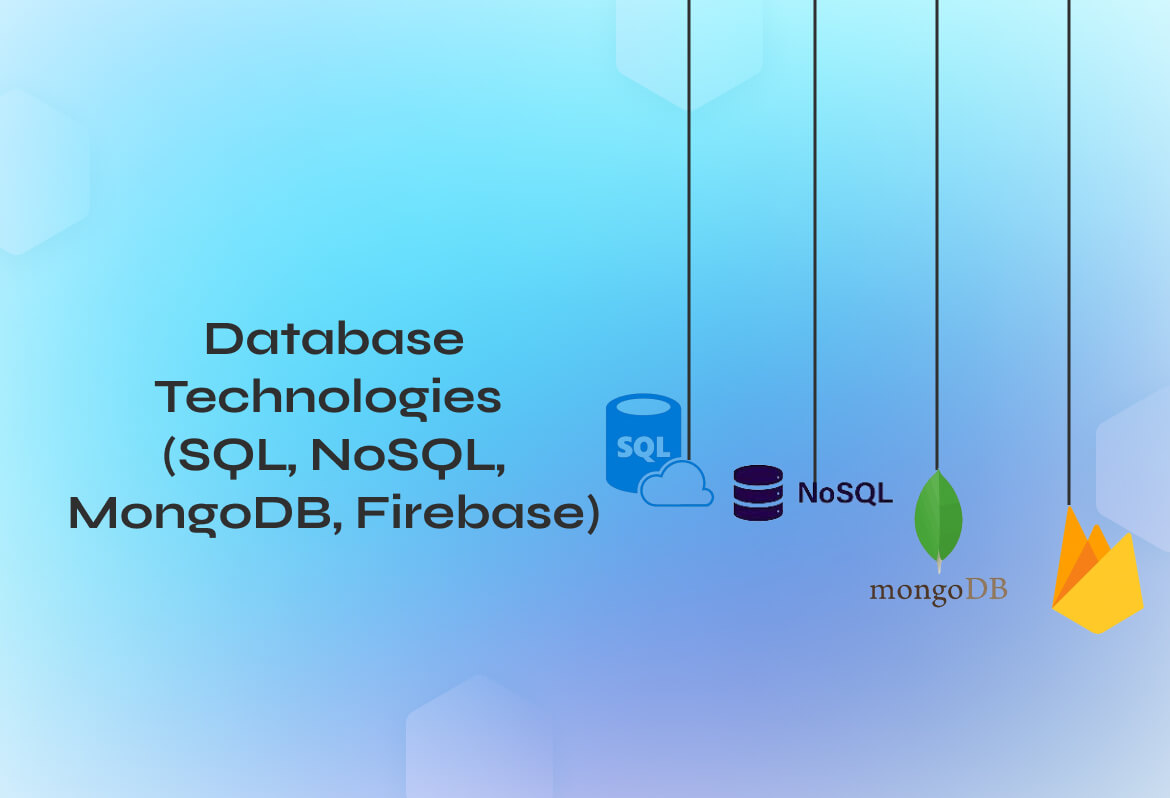
Databases are the backbone of most web applications, storing everything from user data to application state and beyond. The evolution of web development has seen a diversification in database technologies, with SQL (Structured Query Language) and NoSQL databases leading the charge, catering to different needs and scenarios.
SQL Databases: Relational Powerhouses
SQL databases, such as PostgreSQL, MySQL, and SQLite, are characterized by their use of relational models to store data. This model organizes data into tables with defined relationships between them, making it an excellent choice for applications where integrity and complex queries are paramount. SQL databases shine in scenarios requiring complex transactions and precise data retrieval. Their structure promotes data consistency and integrity, making them a staple in banking systems, CRM applications, and any application where data relationships are complex and tightly interconnected.
NoSQL Databases: Flexible and Scalable
NoSQL databases break away from the traditional table-based structure to offer a more flexible and scalable solution. They come in various types, including document (MongoDB), key-value (Redis), wide-column (Cassandra), and graph (Neo4j) databases. NoSQL is particularly well-suited for applications with large amounts of data and no fixed schema requirements. Its schema-less nature allows for rapid development and the ability to handle diverse data types, making it ideal for big data applications, real-time web applications, and for storing JSON documents.
MongoDB: The Document Database Leader
MongoDB is a document database that stores data in flexible, JSON-like documents. This means fields can vary from document to document and data structure can be changed over time. MongoDB is designed for scalability and developer agility, making it a favorite for applications requiring quick iterations and the ability to handle diverse sets of data, such as content management systems, e-commerce applications, and gaming platforms.
Firebase: Real-time Database and More
Firebase, a platform developed by Google, offers a suite of web application development tools, including two database options: Firestore and Firebase Real-time Database. Firestore is a scalable database for mobile, web, and server development from Firebase and Google Cloud. Both databases support real-time data synchronization, making them perfect for chat applications, IoT devices, and live collaborative platforms where users see updates instantly without refreshing their screens.
Making the Right Choice
The choice between SQL and NoSQL databases ultimately depends on the specific requirements of the project, including data complexity, scalability needs, and development speed. While SQL databases are unbeatable in transactional integrity and complex querying, NoSQL databases offer unparalleled flexibility and scalability for handling large volumes of unstructured data.
As web technologies continue to evolve, so do the capabilities of these databases, with many offering hybrid models that combine the best of both worlds. Understanding the strengths and limitations of each database technology is key to selecting the right foundation for your web application.
5. Git and Version Control Systems

In the collaborative world of web development, keeping track of each line of code is paramount. This is where Git and other version control systems come into play, providing a safety net for developers worldwide.
Version Control
Version control is a system that records changes to a file or set of files over time so that you can recall specific versions later. It allows multiple developers to work on the same project without conflicting changes, tracks every individual change by each contributor, and helps prevent data loss.
The Dominance of Git
Git, developed by Linus Torvalds, the creator of Linux, has emerged as the de facto standard for version control in web development. Its distributed nature allows every developer to have a full history of their codebase locally, making operations fast and versatile. Git is celebrated for its branching capabilities, which enable developers to create separate branches for new features or experiments, merging them back to the main branch upon completion.
Why Git is Essential
- Collaboration: Git simplifies collaboration by allowing multiple developers to work on the same project efficiently. It manages code changes from multiple sources, ensuring that there’s a single source of truth for the project code.
- Track Changes: Every change made to the project is tracked, allowing developers to see who made changes, what changes were made, and when they were made. This accountability and traceability are invaluable in complex projects.
- Revert to Previous States: If a new code change causes issues, developers can easily revert to a previous state of the project. This safety net encourages innovation and experimentation, knowing that mistakes can be undone.
- Branching and Merging: Git’s branching and merging features allow for seamless parallel development. Developers can work on new features in isolated branches, merging them with the main codebase only when they’re ready for deployment.
Best Practices for Using Git
To maximize the benefits of Git, developers should adopt best practices such as regular commits, meaningful commit messages, and strategic branching. These practices not only improve project manageability but also enhance team collaboration and code quality.
Tools and Platforms Supporting Git
Platforms like GitHub, GitLab, and Bitbucket enhance Git’s capabilities by providing remote repositories that host your code online, offering tools for code review, issue tracking, and team management. These platforms have become central to the web development workflow, facilitating open-source projects and team collaborations.
Mastering Git and version control is a non-negotiable skill for web developers. It underpins the collaborative nature of modern web development, safeguarding code and fostering innovation. With Git, developers can navigate the complexities of project development with confidence, making it an essential tool in every developer’s arsenal.
Streamline your collaboration and project management with ease. Partner with Silverstone Technologies to harness the full potential of Git for your projects
6. RESTful Services and APIs
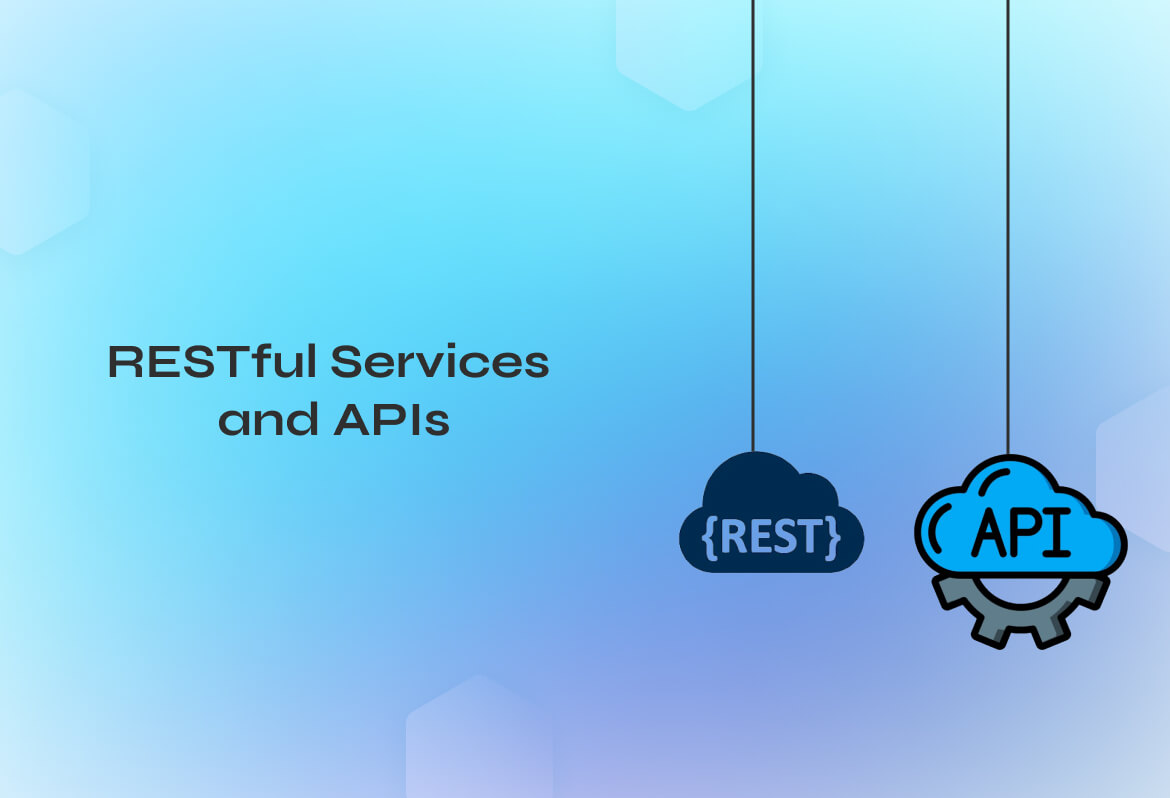
The web is built on a myriad of interactions between different software components, with RESTful services and APIs at the heart of this interaction network. Representational State Transfer (REST) is an architectural style that defines a set of constraints for creating Web services. RESTful services and APIs that adhere to REST principles provide a way for web applications to communicate with each other via the internet using the standard HTTP protocol.
Understanding RESTful Services
RESTful services are designed around the concept of resources, which are any kind of objects, data, or services that can be accessed by the client. A key aspect of RESTful services is their stateless nature, meaning that each request from a client to a server must contain all the information needed to understand and complete the request. This approach simplifies the server-side architecture and improves scalability and performance.
APIs: The Connective Tissue of the Web
APIs (Application Programming Interfaces) are sets of rules and specifications that allow one software application to interact with another. They play a critical role in web development by enabling data exchange between different systems, regardless of their underlying technology. APIs are the building blocks of microservices architectures, allowing for the development of highly scalable and modular applications.
The Importance of RESTful APIs
RESTful APIs have become the standard for public APIs due to their simplicity, ease of use, and compatibility with the web’s architecture. They support CRUD (Create, Read, Update, Delete) operations using standard HTTP methods, making them intuitive for developers to work with. RESTful APIs power many of the services we use daily, from social media platforms to online shopping.
For example, a weather application on your phone might use a RESTful API to retrieve the latest weather data from a server. The application sends a request to the server asking for weather data; the server processes this request and sends back the data in a format that the application can use, typically JSON or XML.
Designing and Consuming RESTful APIs
Designing a good RESTful API requires careful consideration of resources, request methods, response formats, and statelessness. Developers must also implement proper security measures, such as authentication and encryption, to protect sensitive data during transmission.
Consuming RESTful APIs is a common task for web developers, involving sending requests to an API and handling responses. This process is facilitated by various tools and libraries designed to streamline the development of API-driven applications.
RESTful services and APIs are fundamental to the web, enabling the diverse and complex ecosystem of web applications we rely on. Their ability to facilitate straightforward, efficient, and secure communication between disparate systems makes them a critical knowledge area for any web developer.
Integrate powerful APIs seamlessly into your web applications. Contact Silverstone Technologies for expert API development and integration services.
7. Responsive Web Design
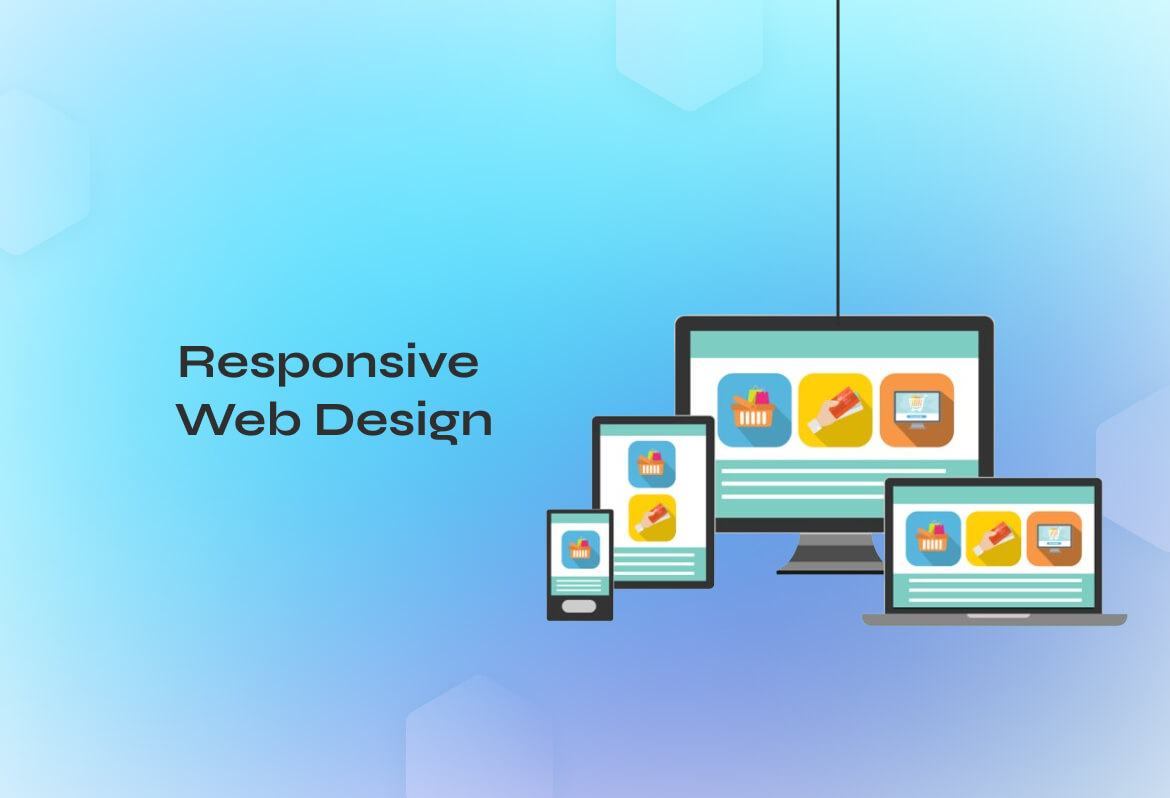
In the era of smartphones, tablets, and desktops, having a web application that looks and functions well on all devices is not just an advantage—it’s a necessity. Responsive Web Design addresses this need by enabling web pages to adapt their layout and content to fit different screen sizes and resolutions seamlessly.
The Core Principles of RWD
- Fluid Grids: The layout of a responsive website is based on grid proportions rather than pixels. This means elements on the page resize relative to one another and the screen size, maintaining the design’s integrity and usability.
- Flexible Images: Images in a responsive design are made to scale within their container elements. This prevents them from becoming too large or small, ensuring they contribute positively to the user experience on any device.
- Media Queries: CSS3 introduced media queries, allowing developers to apply styles based on the device’s characteristics, such as its width, height, orientation, and resolution. Media queries are the backbone of responsive design, enabling distinct layouts for different devices.
The Importance of RWD
The mobile-first approach has become a cornerstone of web design, emphasizing the need to design for smaller screens first and scale up. This strategy stems from the prevalence of mobile browsing, with a significant portion of internet traffic coming from mobile devices. A responsive design ensures that users have a consistent experience, which is crucial for keeping engagement high and bounce rates low.
Moreover, search engines like Google have acknowledged the importance of mobile-friendliness by making it a ranking factor. Websites that are not responsive risk lower search rankings, making RWD not just a design choice but a strategic SEO decision.
Tools and Frameworks
To assist in the creation of responsive designs, several tools and frameworks have become essential:
- CSS Frameworks: Bootstrap and Foundation are two of the most popular CSS frameworks that offer pre-designed components and utilities to build responsive designs efficiently.
- Design Software: Modern design software, such as Adobe XD and Sketch, includes features that allow designers to visualize how their designs will adapt to different screen sizes.
- Online Tools: Responsive design testing tools, such as BrowserStack and Google’s Mobile-Friendly Test, help developers test their websites on various devices and screen sizes.
The Challenge of RWD
While the concept of responsive design is straightforward, its implementation can be complex, especially for intricate designs or legacy websites. Balancing aesthetics with performance, ensuring fast loading times across devices, and testing across numerous browsers and screen sizes require a meticulous approach and continuous testing.
Responsive Web Design is not just a trend but a fundamental principle that underpins the modern web. It enhances user experience, supports SEO efforts, and ensures that websites are accessible to the widest possible audience. As technology continues to evolve, the principles of RWD will remain a critical part of the web developer’s toolkit, adapting to meet the challenges of new devices and screen sizes.
Is your website slow? Improve your site’s performance with Silverstone Technologies and keep your users engaged and satisfied.
8. WebAssembly
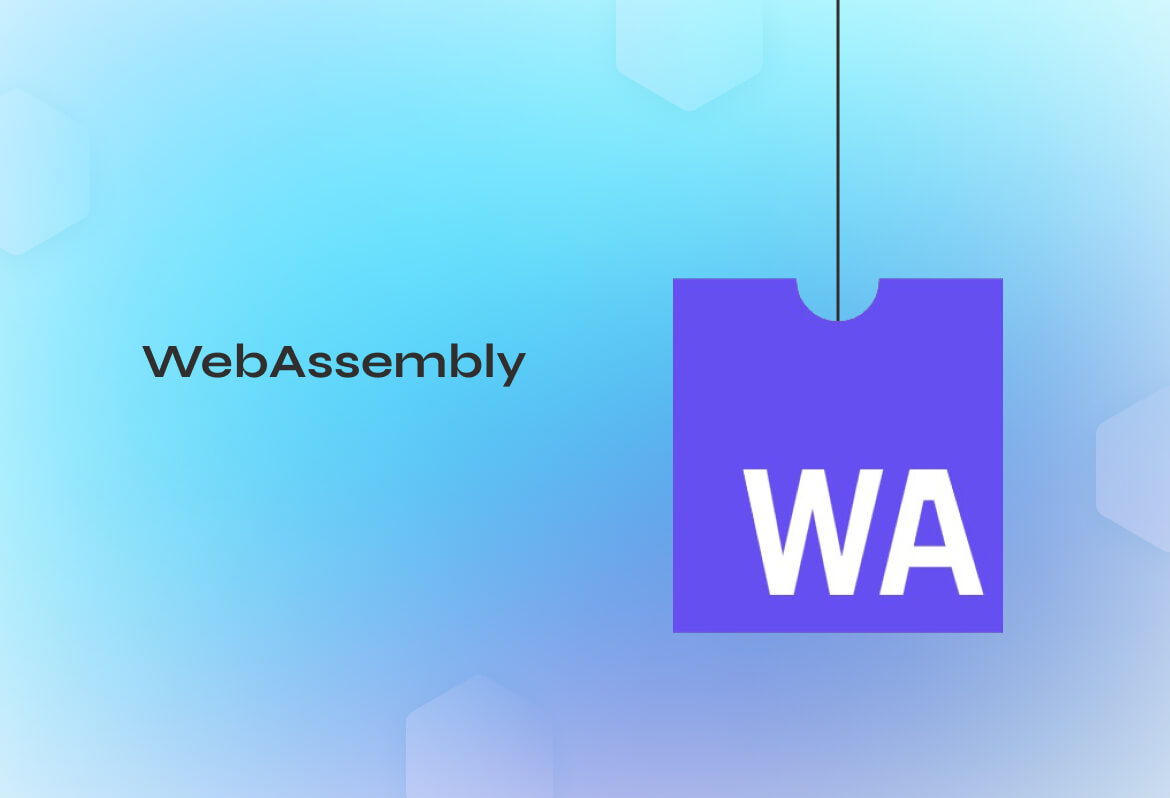
WebAssembly, often abbreviated as Wasm, is a cutting-edge technology that enables code written in languages other than JavaScript to run on the web at near-native speed. This breakthrough provides a significant performance boost for web applications, particularly those requiring intensive computations, such as games, music and video editing software, and complex visualizations.
Bridging the Gap Between Web and Native Performance
WebAssembly offers a way to run code written in languages like C, C++, and Rust on the web, complementing JavaScript rather than replacing it. By compiling code into a binary format that can be executed in a web browser, WebAssembly bridges the gap between web-based applications and the performance of native desktop applications.
Use Cases and Advantages
- Game Development: WebAssembly enables game developers to bring complex, high-performance games to the web without sacrificing speed or user experience.
- Web Applications: Applications that require heavy lifting, such as image or video processing, can benefit from WebAssembly’s performance, offering a smoother experience to users.
- Plugin-Free: By allowing code from various languages to run in the browser, WebAssembly reduces the reliance on plugins for application functionality, enhancing security and compatibility.
Working Alongside JavaScript
One of the strengths of WebAssembly is its ability to interoperate with JavaScript, allowing developers to leverage the best of both worlds. Critical performance bottlenecks can be addressed with WebAssembly, while JavaScript can handle UI interactions and access web APIs. This combination offers a powerful toolkit for developing efficient, robust web applications.
The Future of WebAssembly
As WebAssembly continues to evolve, it is expected to open new possibilities for web development, potentially changing how we think about web app performance and capabilities. Its development is guided by the World Wide Web Consortium (W3C), ensuring its broad compatibility and future growth. Developers are encouraged to explore WebAssembly for projects where performance is paramount, staying ahead in the rapidly advancing field of web technology.
9. Progressive Web Apps (PWAs)
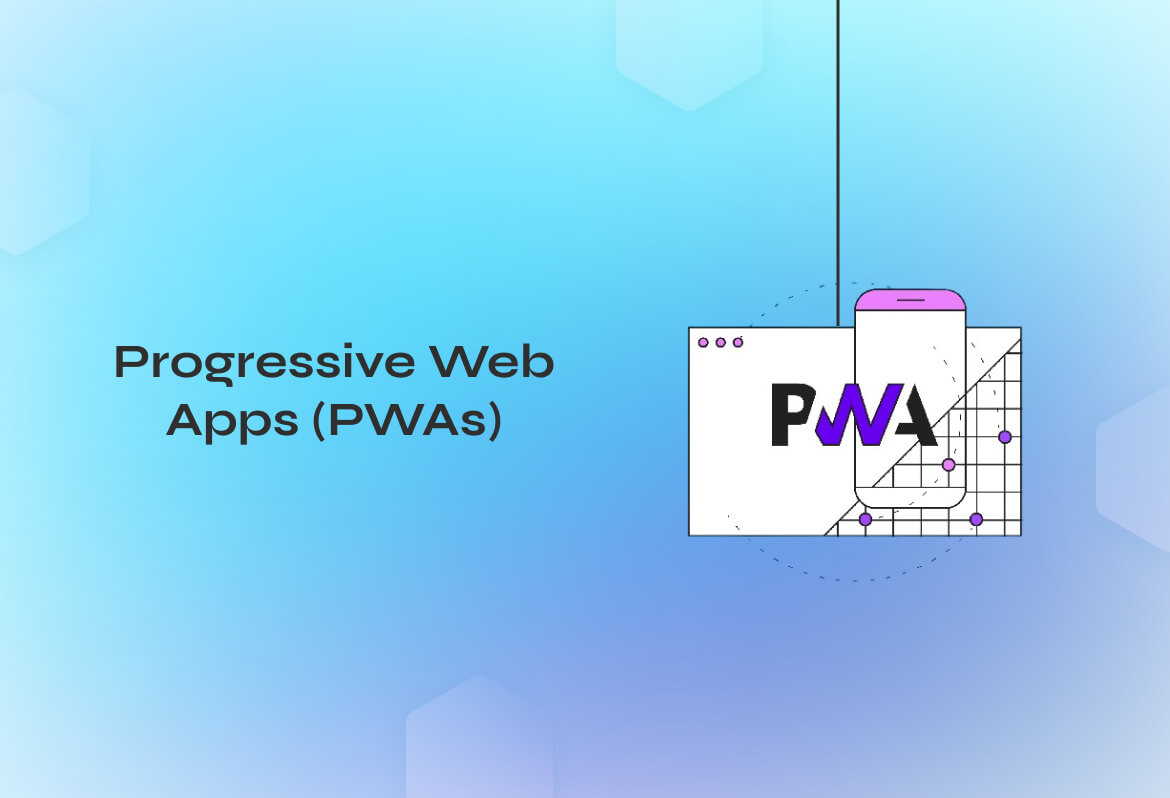
Progressive Web Apps are a development approach that creates web applications with a performance and user experience comparable to that of mobile applications. The core aim is to enhance web applications to be fast, reliable, and engaging, making them practically indistinguishable from native apps on mobile devices.
Key Features of PWAs
- Responsiveness and Compatibility: PWAs adjust smoothly to fit any screen size, ensuring a consistent and engaging experience on desktops, tablets, and smartphones.
- Offline Capability: Service workers, scripts that run in the background separate from a web page, enable PWAs to load instantly and work offline or on low-quality networks. This feature significantly improves accessibility and user satisfaction.
- App-like Experience: PWAs are designed to mimic the feel and functionality of native apps, including transitions and gestures, while being accessible through a browser. This approach eliminates the need for app store downloads, offering direct access via the web.
- Push Notifications: Engaging users with timely updates, PWAs can send push notifications, enhancing communication and engagement with users even when the browser is closed.
Safety and Security: Served via HTTPS, PWAs ensure that all data transferred between the web server and the user is encrypted and secure.
The Impact of PWAs on Businesses and Developers
For businesses, PWAs represent a significant opportunity to increase engagement and conversions. The app-like experience combined with the wide reach of the web can lead to improved user retention and satisfaction. Furthermore, PWAs can be less costly and time-consuming to develop and maintain than native apps, given their single codebase across platforms.
Developers appreciate PWAs for their use of familiar web technologies (HTML, CSS, and JavaScript), making the development process more accessible and streamlined. The ability to update a PWA without user intervention or app store approvals also simplifies the deployment and maintenance process.
The Future of PWAs
As web standards and capabilities continue to evolve, PWAs are set to become even more integrated into the user’s digital experience. With ongoing support from major browsers and the increasing importance of mobile web access, PWAs are poised for significant growth in adoption and sophistication.
Ready to take your web development to the next level? Get in touch with Silverstone Technologies today and let’s build something amazing together!
FAQ's

What is web development?
Web development is the process of building and maintaining websites and web applications. It involves creating the code and programs that tell a website how to operate, look, and interact with users. Web development can be divided into two main categories: front-end (the user-visible part of the website) and back-end (the server-side that handles data storage and processing).
Why do I need to learn HTML and CSS?
HTML (HyperText Markup Language) and CSS (Cascading Style Sheets) are the foundation of all websites. HTML is used to structure content on the web, while CSS is used for styling this content. Learning HTML and CSS is essential because they allow you to create and design websites from scratch, making sure they look good and function well on all devices.
Can I use JavaScript for both front-end and back-end development?
Yes, you can! JavaScript started as a language for making web pages interactive on the client side (front-end). However, with the introduction of Node.js, developers can now use JavaScript to write server-side code (back-end) as well. This means you can use JavaScript to develop the entire web application, making it a very powerful tool in web development.
How do I choose the right database for my project?
Choosing the right database depends on your project’s specific needs. If your data is highly structured and requires complex queries, a SQL (Structured Query Language) database like MySQL or PostgreSQL might be best. If your data is more flexible or unstructured, a NoSQL database like MongoDB could be more suitable. Consider factors like data structure, scalability, and the complexity of queries when deciding.
What's the best way to keep my web application secure?
Keeping your web application secure involves several practices:
- Validate and sanitize all user inputs to prevent SQL injection and XSS attacks.
- Use HTTPS to encrypt data in transit.
- Keep your software and dependencies up to date with the latest security patches.
- Implement strong authentication and authorization measures to control access.
- Regularly review your code and use security tools to identify potential vulnerabilities. Staying informed about the latest security threats and best practices is also crucial for maintaining the security of your web application.
Conclusion
The web development landscape is dynamic, with new technologies emerging to meet evolving demands. Staying adept in technologies from HTML and CSS to WebAssembly and Progressive Web Apps is crucial for navigating the digital realm’s challenges and opportunities. As these technologies advance, they promise to enable the creation of web applications that are more engaging, efficient, and secure. By embracing these innovations, developers are poised to craft web experiences that are not only immersive and accessible but also delightful for users worldwide. The path of web development is a journey of continuous learning, offering tools and insights for innovative solutions and forward-thinking in our digital age.


